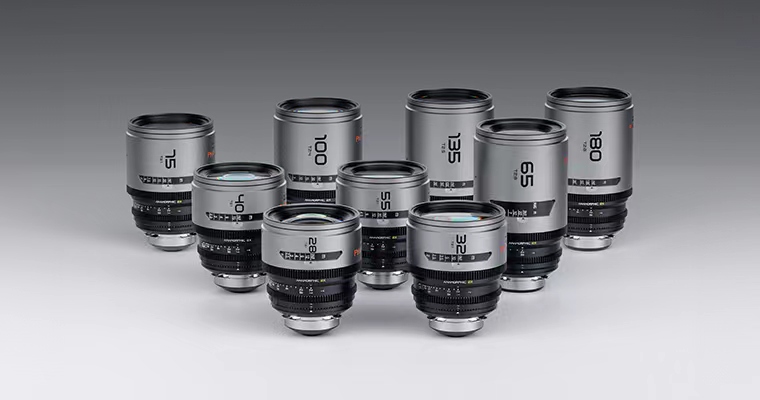DZOFILM TANGO ZOOM 18-90MM REVIEW
2024.1.17
Concept Introduction
The Tango is a type of ballroom dance involving two partners working closely together. The movements are rhythmic, flexible, and can be as smooth or sharp as is appropriate for the moment. The dancers' movements must complement each other in order to make evocative art. That is the poetic notion that DZOFILM wants to attach to their new line of Zoom lenses designed for the super 35mm format.

Series Overview
The Tango Zoom is comprised of two lenses: an 18 to 90 mm with a constant T2.9 aperture, and a 65 to 280 mm which functions at a constant T2.9 from 65 to 200 mm, and T4 from 200 to 280 mm. They also both come with swappable PL and EF mounts in the box. Each of these lenses covers an impressive range of focal lengths and, between the two, you should be set for a wide variety of situations.


Usage Scenarios
DZO's stated goal here is cinema-grade optics with ENG or broadcast-style functionality, giving filmmakers and videographers a flexible lens set suitable for film sets, documentaries, sports, live events, and I'm sure many other situations that I haven't accounted for.

Optical Quality and Cinematic Aesthetics
The Tango lenses are designed to minimize distortion, vignetting, and chromatic aberrations. The color rendition is consistent between the pair of lenses and aims for color accuracy, especially in the skin tones. Both lenses feature 16-blade apertures that create smooth, circular, dreamy bokeh. Additionally, the multi-layer anti-reflective lens coating produces a distinctive teal-blue flaring. All of this combined with the lens's moderate sharpness means that the Tango lenses are more than capable of delivering imagery with that coveted cinematic look.
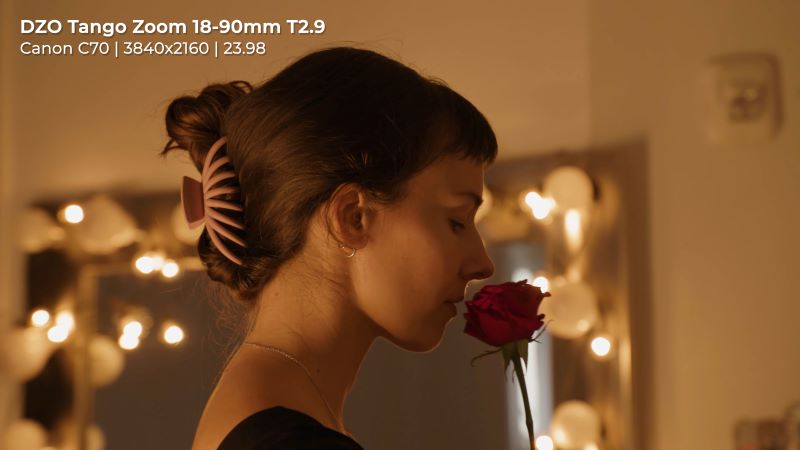
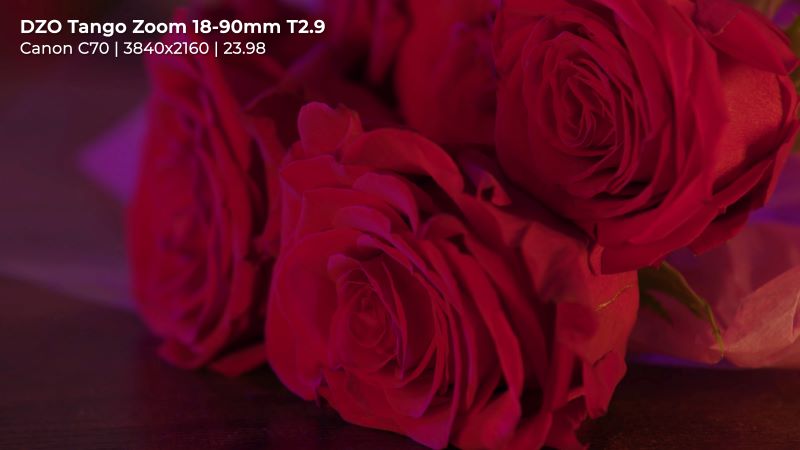
Parfocal Design and Focus Stability
Another feature of the Tango line is its parfocal design. That means that the focal plane is unaffected when changing the focal length. To put it more simply, whatever is in focus will stay in focus as the lens zooms in or out. Speaking of focus, these lenses are designed to have minimal focus breathing, so shifting focus won't affect the focal distance, and changing the focal distance won't affect the focus.
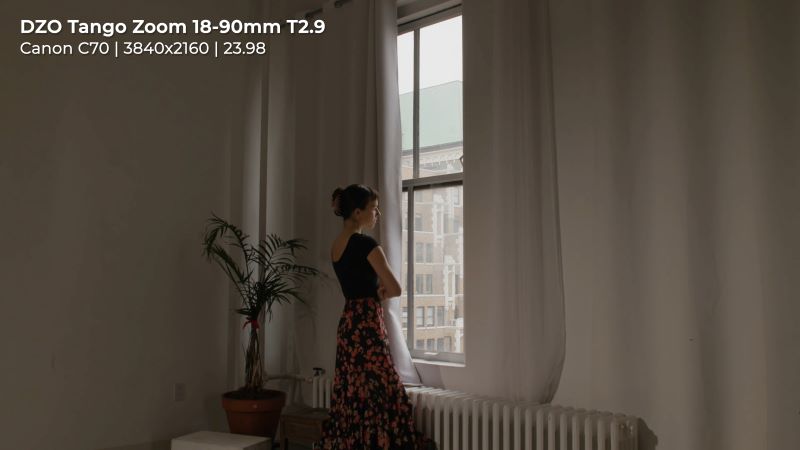
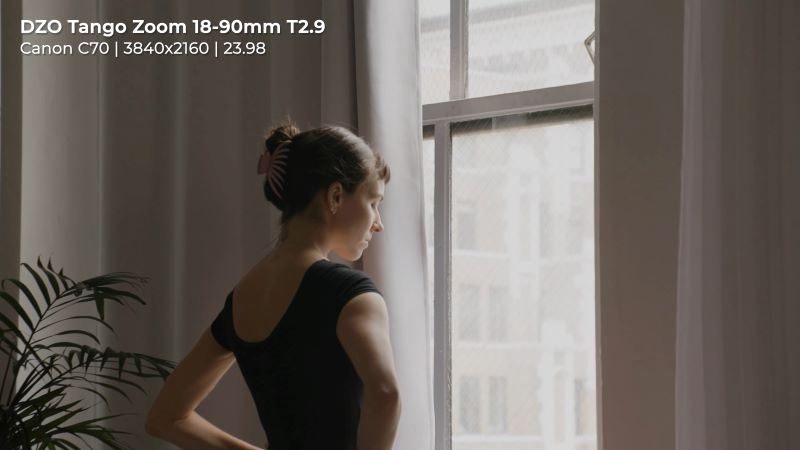
Focus Distance and Manual Control Features
Staying on focus for a moment, the 18 to 90 mm Tango lens has a minimum focus distance of 7 m or 2' 3", while the 65 to 280 mm Tango sports a minimum focus distance of 1.1 m or 3' 7". As you might expect from a set of C lenses, the Tango zooms are designed for manual control of the focus, zoom, and aperture rings. Both lenses have 270° of rotation for the focus control and 100° of rotation for the zoom control. However, there is a minor disparity between the rotation of the iris control, with the Tango 18 to 90 featuring 74° of rotation versus the Tango 65 to 280's 73.5° of rotation.

Back Focus Adjustment and ENG-style Functionality
There is an additional ring for flange back adjustment to make tuning the back focus of the lens with the camera simple and consistent. Once the back focus is properly tuned, simply tighten the screw to prevent accidental adjustments. So far, so C-grade lens, but what about the ENG-style functionality that's supposed to complement the cine-grade optics? That's what Servo units are for.

DZO has even gone as far as partnering with MOVCAM to design a bespoke Servo unit accessory that perfectly fits these lenses and will be an optional add-on once it's released. Until then, other Servo units can be fitted to the Tango lenses. The focus, zoom, and iris rings have uniform placement between the pair of lenses to facilitate easy on-the-fly swapping, even when using accessories like focus pullers and Servo units. That said, there might not be much need to swap lenses often. Both lenses have an impressive and versatile focal range, making it easy to get a lot of coverage from a single lens setup, which is appreciated not only because we only have access to one of the lenses but because all of the design uniformity and compatibility in the world doesn't change the fact that these are, to use a technical term, hefty boys.
Durability, Construction, and Low-Light Visibility
Cinema lenses are an expensive investment and are built with durability and dependability in mind—expensive quality casing for expensive intricate mechanics. The Tango Zoom line exemplifies this with over 20 internal elements and a body made of aluminum alloy. There is more to these lens bodies than pricey weightiness, though. Further leaning into the ENG functionality, the Tango lenses use fluorescent paint for the markings on the focus, zoom, and aperture rings, making them easy to read in low-light environments.

For different sorts of versatility, DZO offers the option to buy the Tango Zoom line with either Imperial or metric markings. Of course, all these numbers and specs are important and vital to making an informed decision regarding whether or not these lenses fit your needs. But it also helps to see the lenses in action.
Conclusion
DZOFILM set out to make effective quality C zoom lenses for super 35mm cameras. The Tango zooms deliver on that, offering an impressive range of focal lengths, a pleasing cinematic look, and quality craftsmanship suitable for a variety of professional uses.
For more information about DZOFILM Tango Zoom, please click here.

